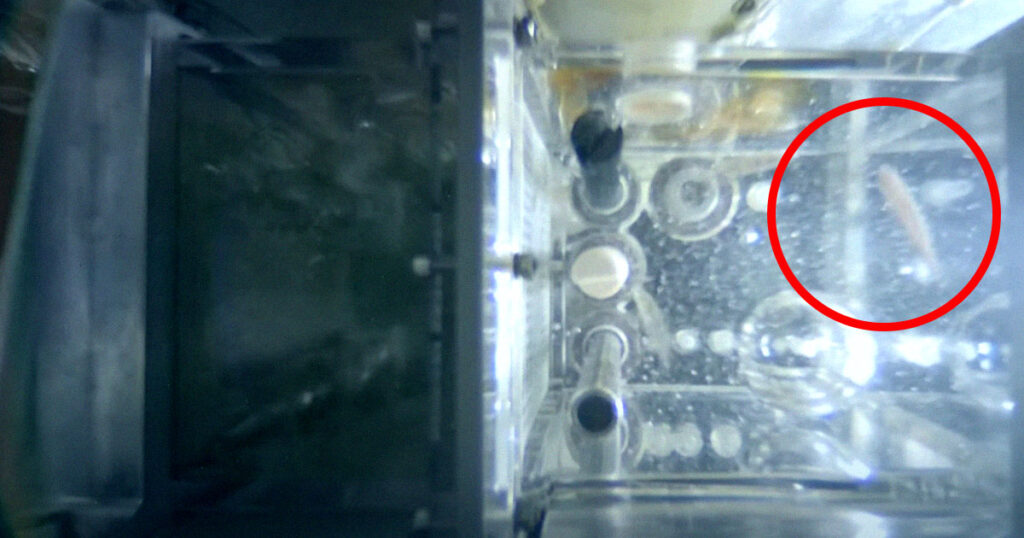Swimming in circles
Last month, China sent four small zebrafish as stowaways to its Tiangong space station.
And so far, according to the state-owned company Xinhua News Agencythe striped catch thrives in the microgravity environment of its heavenly space aquarium. That’s despite the fact that the astronauts aboard the station observed the fish “showing abnormalities in directional behavior, such as inverted swimming and rotational movements.”
In a video released by the China National Space Administration, the fish swim in many different directions in a glass cube and appear to have difficulty determining which way is up.
They even underwent rigorous testing before receiving their astronaut wings.
“Meanwhile, zebrafish, like astronauts, must go through selection rounds to become ‘aquastronauts,'” hydrobiology researcher Wang Gaohong of the Chinese Academy of Sciences said. Xinhua.
But their struggle serves an important purpose. Scientists hope to study the impact of microgravity on vertebrate animals such as zebrafish by focusing on their behavior, growth and development by analyzing water samples and fish eggs during the experiment.
The data could shed more light on how space and cosmic rays might impact much larger vortices like humans, which could have important implications for our future efforts to venture further into space.
Spread
This isn’t the first time people have had to entertain fish in space. In 1973, NASA launched two mummichog fish into space, alongside a container containing fifty fish eggs. an S from 2016scientific America articlemaking them the first fish in space.
Upon arrival at NASA Skylab space stationthe fish swam in elongated loops as if they were the rotating hands of a clock made by Salvador-Dali, the article said. “Without gravity, the fish didn’t know which way was up.”
Eventually, the fish turned their backs to the lights in the Skylab, using light as a way to direct themselves. And the young that came aboard as eggs also used light to orient themselves.
But despite what appeared to be a successful introduction into the cosmos, fish – like humans – suffer from loss of bone density Japanese discovered when they sent zebrafish and medakaa type of fish commonly found in rice fields in Asia, after the International Space Station in 2012.
In other words, further research into the behavior of fish in a near-weightless environment could be invaluable to our understanding of the effects of space travel on human health.
More about fish: Scientists propose farming fish on the moon







